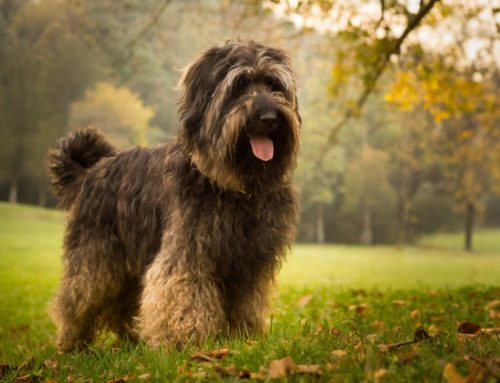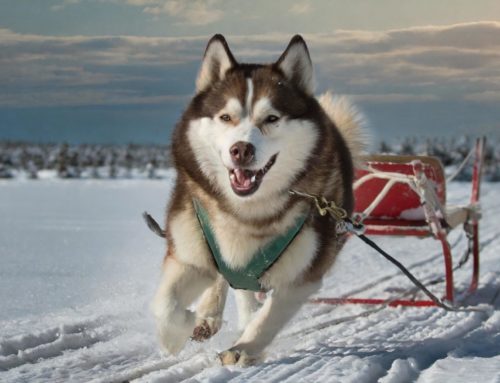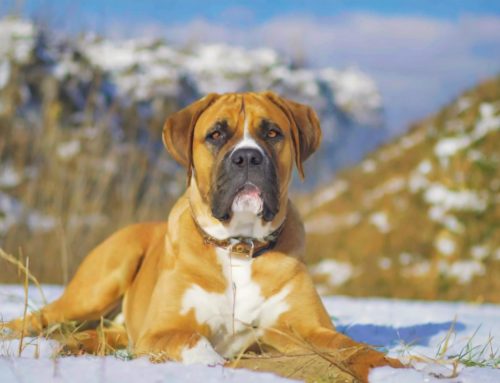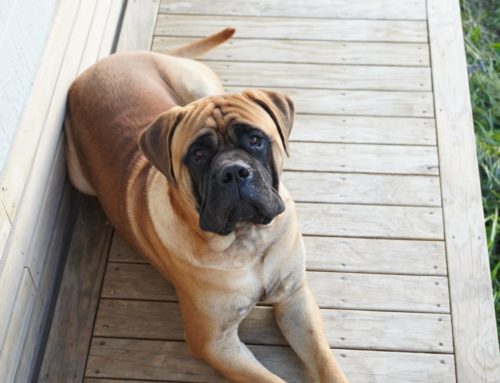
The Billy, a French dog breed, has a fascinating history and is best known as a hunting dog. This breed was developed in the 19th century by Gaston Hublot du Rivault in the Poitou region, with the aim of creating an efficient hunting dog for hunting in packs.
The Billy originated from the crossing of several French dog breeds, including the Chien Blancs du Roy and the Chien de Larye. The breed was mainly used for hunting big game, such as deer and wild boar.
The Billy is known for its excellent nose, speed and stamina, essential traits for a hunting dog. The Billy’s coat is short, which makes maintenance relatively easy, although regular brushing is recommended. They usually have an all-white coat or a white coat with light orange or lemon-yellow coat.
Although the Billy was a popular choice for hunting in packs in the past, the breed is rarer these days and more of a companion dog. They are known for their shrewd and industrious nature, but can be rather quarrelsome towards other dogs due to their strong hunting instinct.
Breed standard of the Billy (FCI Group 6 – Scent hounds and related breeds) and breed association
The breed standard of the Billy, as established by the Fédération Cynologique Internationale (FCI) and supported by the Dutch Brakken Club, describes this dog breed as a strong French bracken with specific characteristics. Known for its liveliness, industriousness and sagacity, the Billy is completely at ease in open spaces where it can enjoy a good run.
According to the breed standard, the Billy should be a well-built and strong dog, weighing between 25 and 33 kilograms. This dog breed needs a lot of exercise and is therefore better suited to environments where it has plenty of space to move and explore.
The Billy’s coat is short and maintenance is minimal; it only needs to be brushed occasionally. The standard colour of the coat is white with spots, with other colours such as coffee brown prohibited by the breed standard.
The Billy’s eyes are open and dark, contributing to their alert and attentive appearance. The life expectancy of a Billy is relatively long, but the breed needs proper care and attention to stay healthy. As a breed association, the Dutch Brakken Club is committed to preserving and promoting this unique dog.
Appearance and coat of the Billy
The Billy has a powerful and muscular physique with a height ranging between 60 to 70 cm for males and 58 to 62 cm for females. The Billy’s weight is usually between 25 and 35 kilograms. They are known for their quick and industrious nature and are particularly suitable for hunting in open spaces, where they can expend their energy.
In terms of appearance, the Billy has a short coat that is usually white with light orange or café au lait markings. Their head is dry and has a slightly arched skull with a visible occiput and slightly undershot teeth. Their eyes are open, dark and lively, contributing to their intelligent appearance.
Hereditary diseases and information about the Billy
The Billy, a robust and mostly healthy dog breed, may nevertheless be susceptible to certain hereditary diseases and conditions common to large dog breeds.
The following list includes some of the most common hereditary conditions in the Billy:
- Hip dysplasia: A common condition in large breeds, in which the hip joint develops abnormally, which can lead to arthritis and pain.
- Elbow dysplasia: Similar to hip dysplasia, but in the elbow joints, which can also result in pain and lameness.
- Bloat or stomach torsion: A serious condition in which the stomach twists and swells, which can be life-threatening.
- Ear infections: Due to their drooping ears, Billy’s can be prone to ear infections.
- Allergies: Skin allergies can occur, often caused by environmental factors or food.
- Heart conditions: Large dogs can be prone to various heart problems, such as cardiomyopathy.
- Eye disorders: Such as cataracts or progressive retinal atrophy, which can affect vision.
The character of the Billy
The Billy, a dog breed known as a Scenthound, has a lively and astute character, characteristic of dogs from Montemboeuf and Céris. Developed by Gaston Hublot de Rivault around 1886, this breed is known for its strong, quick and industrious nature.
This breed was originally bred for hunting big game, such as deer and wild boar, and is therefore very energetic, courageous and tenacious. Despite their strength and hunting instinct, Billy’s are known to be friendly and good-natured. These dogs are loyal and attached to their owners, but may have a strong prey drive due to their hunting heritage.
Therefore, it is important that they be well socialized from an early age, both with people and other animals. Billy’s are intelligent and can be trained, but they require an experienced owner who is consistent and patient.
The Billy is a large dog weighing between 25 and 35 kg. They have a striking white with light orange coat that only needs to be brushed occasionally. These dogs are most comfortable in open spaces, where they can run around and expend their energy.
Despite their size and strength, with a strong forehand and deep flanks, they can adapt well to city life with proper upbringing and care. Billy’s have lively eyes and are usually very obedient to his master. Their touchy coat is not suitable for colors such as very light brown, black or red; such colors are prohibited by the breed standard.
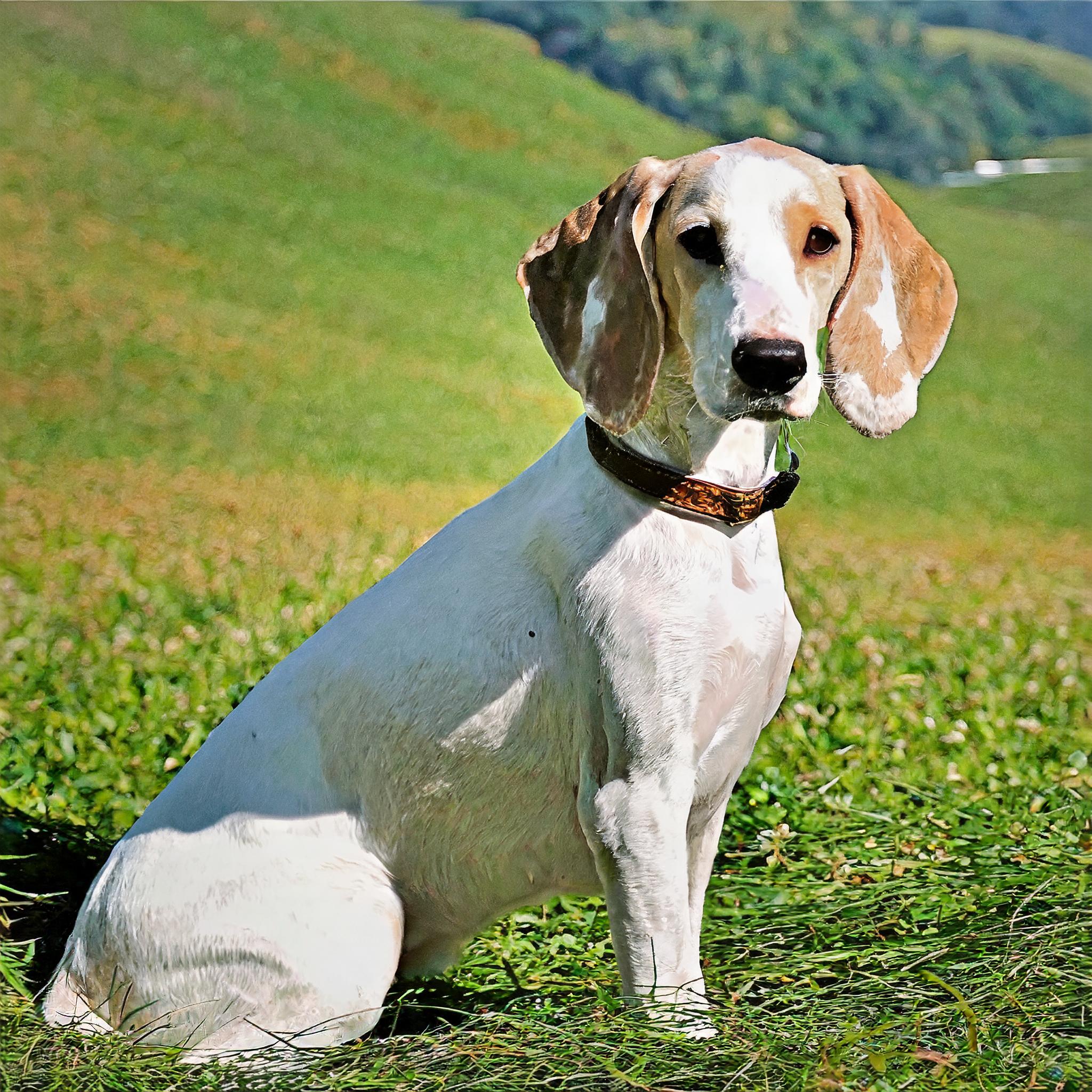
The Care of the Billy
The Billy, requires specific care to live a healthy and happy life. This breed loves exercise and needs plenty of space, ideally in open spaces where they can enjoy running around. They are not entirely at ease in confined or closed environments.
A Billy’s coat only needs occasional grooming, meaning regular brushing is enough to keep their coat neat and clean. Despite their short coat, it is important to keep the skin and coat in good condition.
These dogs have a life expectancy of many years and enjoy a regular daily walk the most. They are very fast and have flat ribs, which gives them a unique physique. Originally used as pack dogs, Billy’s need a good upbringing to adapt well to life as a companion dog.
Socialisation and upbringing of the Billy
The socialisation and upbringing of the Billy, a French bracken breed, are crucial for its development into a well-adjusted dog. Early socialisation is important to ensure that the Billy is comfortable with different people, environments and other animals. This helps to minimise any shy or anxious behaviour.
Because the Billy was originally bred as a mutt dog, it is a breed that responds well to group training and socialisation. They enjoy interacting with other dogs and this can have a positive impact on their behaviour and well-being. Regular, positive interactions with other dogs and people from an early age are recommended.
Raising a Billy requires consistency and patience. They are intelligent and learn quickly, but can also be stubborn. Positive reinforcement techniques, such as rewards and praise, are effective in training this breed. It is important to be patient and consistent in training.
The Billy needs plenty of exercise and mental stimulation. Long walks, playtime and training exercises help to control their energy. If they are not sufficiently stimulated, they may exhibit destructive behaviour.
How much experience does a Billy require
The Billy, can be a challenge for inexperienced dog owners because of its strong hunting instinct and energy level. This breed requires an owner who understands how to deal with an active and independent dog. Experienced dog owners familiar with working dogs or hunting dog breeds will likely be better equipped to understand and meet the needs of a Billy.
Because the Billy is bred for hunting in packs, they need a lot of exercise and mental stimulation. This can be a challenge for new dog owners who are not yet familiar with training and managing an energetic and sometimes stubborn dog.
Inexperienced owners should be prepared to invest time and energy in training, socialisation and sufficient exercise to meet their Billy’s needs.
Experienced owners are likely to have an advantage with their knowledge of consistent training and management of the hunting instinct. They can better address the Billy’s needs for structure, leadership and sufficient physical and mental activity.
Is training necessary?
Training is essential for the Billy, These dogs are intelligent and can learn quickly, but they also have a strong will. Therefore, consistent and patient training is crucial. Because of their background as hunting dogs, Billy’s have a natural tendency to follow and hunt, which means training in obedience and recall is crucial for their safety.
It is important to start training at an early age so that they learn to listen and respond to their owners. Socialisation is also a key aspect of their training. By exposing Billy to different people, animals and environments, they can learn to cope with different situations and be less likely to show fearful or aggressive behaviour.
Physical and mental challenges are necessary for this breed, not only to manage their hunting instincts, but also to prevent boredom and destructive behaviour. Activities such as tracking, long walks and obedience training are ideal for the Billy.
How much exercise does a Billy need?
An energetic and powerful dog breed, the Billy requires significant daily exercise to stay healthy and happy. Originally bred as a hunting dog, this breed has a natural tendency to run and explore. Daily, they require at least one to two hours of exercise. This can include long walks, running, playing in a safe, fenced area, or other physical activities.
It is important that the Billy has a chance to expend his energy, which helps prevent behavioral problems that may stem from boredom or pent-up energy. In addition to physical activity, this breed also needs mental stimulation. Training activities, intelligence games, and scent work can help keep their minds sharp.
It is essential to ensure that the Billy can run and play safely in an enclosed area, as their hunting instinct can drive them to chase small animals or interesting scents.
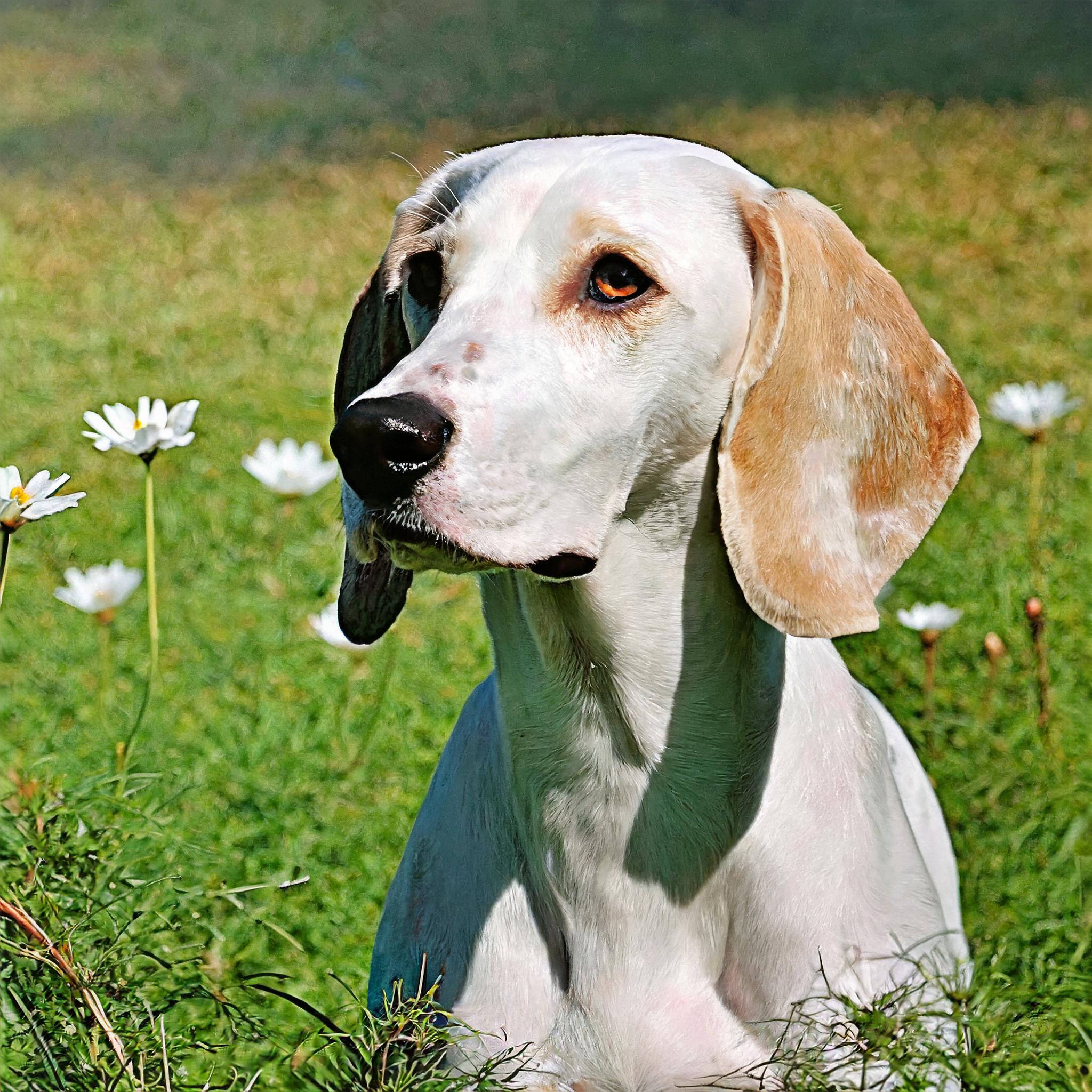
How does it interact with children?
The Billy, can be a good companion for children, provided certain conditions are met. Because of their size and strength, it is important to ensure that interactions between Billy’s and children are always supervised, especially with younger children.
This breed is generally friendly and sociable, but their energy and size can sometimes be overwhelming for small children.
Socialisation is crucial from an early age. Billy’s that are used to dealing with children from an early age will integrate better into a family with children. It is important to teach both dog and children how to treat each other respectfully.
This breed gets along well with children who understand how to treat dogs respectfully. Encouraging interactions where both children and the dog feel comfortable and safe helps build a strong bond.
Benefits of a Billy
- Energetic and Active: Billy’s are highly energetic dogs that excel at activities that require a lot of exercise.
- Strong Hunting Instincts: They have excellent hunting skills and are ideal for hunting enthusiasts.
- Friendly: In general, they are friendly and get along well with people.
- Little Care Required: Their coat requires relatively little maintenance.
Disadvantages of a Billy
- Lots of Exercise Needed: Billy’s require a lot of physical activity, which can be a challenge for people who don’t spend much time outdoors.
- Less Suitable for City Living: Their need for space and exercise makes them less suitable for living in a flat or densely populated urban areas.
- Strong Hunting Instinct: Their strong hunting instinct can be problematic in an environment with small pets.
- Training and Socialisation Needed: Effective training and socialisation are essential to manage their strong personality.
- Not Ideal for First Dog Owners: Because of their size, energy and hunting instincts, they may not be the best choice for inexperienced dog owners.
How old will a Billy get
The life expectancy of a Billy is usually between 10 and 12 years. However, this age can vary depending on several factors, including genetics, living conditions, and the overall healthcare the animal receives.
Price of a Billy, Breeders and adoption
The Chien de France-Comte, better known under its AKC designation as the Franche-Comtois, is a distinguished yet somewhat rare presence in the US. Below is an overview of expected costs, comparable breeds, and further guidance:
Price of a Franche-Comtois Puppy in the US:
- Typical Range: Given their rarity, it’s challenging to specify an exact cost. However, you might spend between $1,500 and $3,000 for a puppy from a reputable source.
Price Influencing Factors:
- Breeder’s Reputation: Higher prices are common for puppies from well-regarded breeders with a history of champion or working lines.
- Pedigree: AKC-registered Franche-Comtois command a premium over non-registered counterparts.
- Geographical Location: Expect to pay more in areas where the cost of living is higher.
- Age: Typically, adult dogs are less expensive than their younger counterparts.
- Purpose Bred: Dogs bred for specific roles like herding or cart pulling may carry a higher price tag.
Similar Breeds Worth Considering:
For those drawn to the Franche-Comtois for their intelligence, dedication, and utility, these breeds might also appeal:
- Large Swiss Mountain Dog: Known for their composure and eye-catching coats, with prices ranging from $2,000 to $3,500. They tend to be shorter than the Franche-Comtois.
- Bernese Mountain Dog: A beloved working breed noted for its amiable nature, with costs typically falling between $2,000 and $4,000. They are generally larger and have a shorter lifespan.
- Appenzeller Sennenhund: Vibrant and agile herders known for their distinctive vocalizations, available for about $1,500 to $3,000. They are more compact and nimble.
Additional Guidance:
- Thorough Research: Franche-Comtois require considerable space, exercise, and an engaging environment to thrive. Confirm that your living situation is suited to their needs.
- Visit the Breeder: Inspect the breeding environment and meet the progenitors to evaluate potential health and behavior.
- Focus on Training: Leveraging their intelligence and willingness, engage in early training and socialization to foster sociable behaviors.
- Maintain Activity: Originally bred for laborious tasks, these dogs flourish with regular physical and mental engagement.
Locating a Franche-Comtois Breeder:
- Franche-Comtois Fanciers USA: This organization can be a valuable resource for connecting with ethical breeders.
- Online Kennel Directories: Utilize these to search for US-based breeders of Franche-Comtois. Ensure direct communication for detailed information regarding availability and costs.




